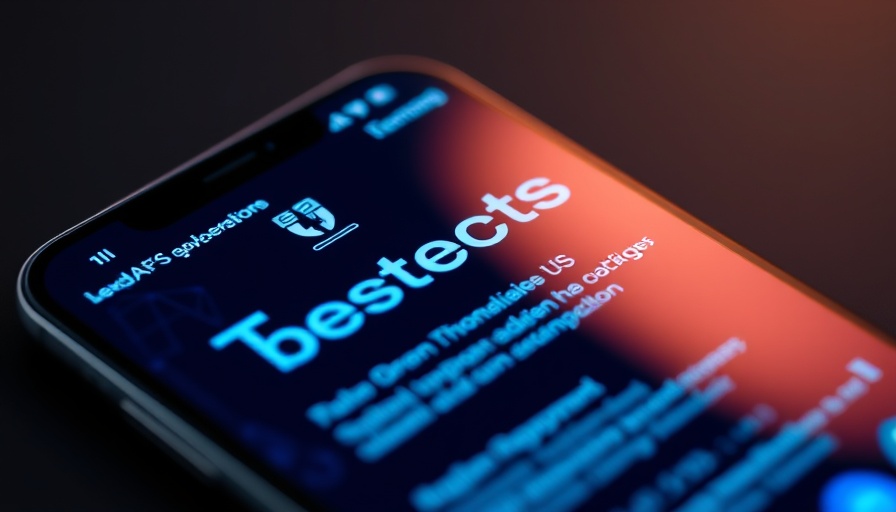
Unlocking Speechify: A Game-Changer for Modern Communication
In a world flooded with information, effective communication is crucial. For business owners, mastering this art can be the difference between being heard and being lost among the noise. Speechify offers a unique solution, turning written text into engaging, lifelike audio, enhancing how businesses connect with their audiences. By producing professional-grade voiceovers, Speechify not only empowers entrepreneurs but also opens doors to greater accessibility and reach.
How Speechify Revolutionizes Content Delivery
Speechify is distinguished by its advanced features aiming to transform any text into a rich auditory experience. Key functionalities include:
- AI Voice Cloning: Create a digital replica of your own voice or choose from an extensive library of over 1,000 voices in multiple languages.
- Emotional AI Voices: Select from various emotional tones, enhancing storytelling by connecting with listeners on a deeper level.
- Dubbing and Localization: Cater to global audiences by localizing content in over 60 languages swiftly and effectively.
This versatility allows businesses to produce promotional materials, training videos, and customer service dialogues that resonate with their audience, regardless of their location.
Engagement Has Never Been More Critical
For business owners, the challenge is no longer just reaching an audience; it’s about engaging them. Research indicates that auditory learning increases retention rates significantly compared to standard reading methods. With Speechify's customizable options, companies can tailor their messages to suit varying audience needs, fostering a more fulfilling interaction. Imagine being able to present complex ideas in a friendly, relatable voice that enhances understanding—a game-changer for coaches, consultants, and educators alike.
The Financial Implications of Speechify
Many small businesses face budget constraints when producing audio content traditionally. Hiring voice actors or outsourcing production can quickly deplete resources. Speechify democratizes access to quality voiceover talent, allowing startups and growing businesses to produce their content affordably. This flexibility aligns perfectly with the lean operation model many businesses strive for today.
Accessibility: A Pillar of Modern Business Practices
With increasing societal focus on inclusivity, businesses equipped with tools like Speechify gain a competitive edge. The platform’s inclusive voice library promotes diversity, ensuring that content appeals to all demographics. Moreover, businesses can address the needs of those with reading difficulties or visual impairments, making their offerings accessible to a wider audience. Enhancing accessibility not only demonstrates social responsibility but also boosts brand loyalty.
Integrating Speechify into Your Business Strategy
The multitude of applications for Speechify in various sectors—education, e-commerce, and service-based industries—illustrates its versatility. Entrepreneurs can leverage this technology not merely as an add-on, but as a core aspect of their operational strategy. For example:
- E-Learning Platforms: Use Speechify to create engaging course material, increasing student interaction and satisfaction.
- Marketing Content: Craft compelling ads that effectively communicate brand messages through relatable voiceovers.
- Customer Support: Automate responses with personalized audio replies, enhancing user experience.
Each application presents an opportunity for business growth and client retention, solidifying the brand's reputation in an increasingly competitive market.
Future Trends in Text-to-Speech Technology
As technology evolves, so too does the potential for text-to-speech solutions. The future promises capabilities such as emotional AI that surpass current offerings, creating even more nuanced interactions. Predictions indicate a growing reliance on AI for personalization, allowing businesses to tailor audio content to individual customer preferences in real-time. This adaptability could redefine customer relations, significantly enhancing client retention strategies.
Making Informed Business Decisions with Speechify
As an entrepreneur, knowing tools like Speechify exists provides a strategic advantage. It allows for swift decision-making based on real-time data regarding audience engagement and preferences. These insights facilitate informed marketing strategies, enhancing efficiency while reducing costs.
In summary, leveraging Speechify for your business not only enhances communication but also opens new avenues for growth in an age where compelling narratives are essential. By integrating this technology into your communication strategies, not only do you stand out, but you also ensure that your voice resonates with your audience—transforming how you engage, connect, and succeed in business.
 Add Row
Add Row  Add
Add 




Write A Comment